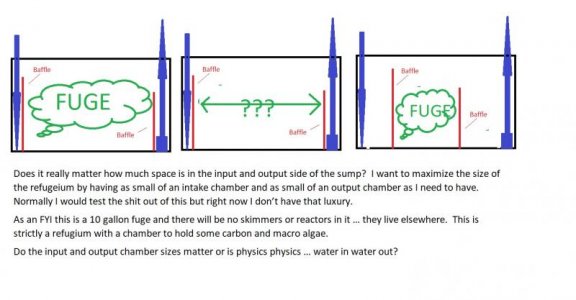Does it really matter how much space is in the input and output side of the sump? I want to maximize the size of the refugeium by having as small of an intake chamber and as small of an output chamber as I need to have. Normally I would test the **** out of this but right now I don't have that luxury.
As an FYI this is a 10 gallon fuge and there will be no skimmers or reactors in it "¦ they live elsewhere. This is strictly a refugium with a chamber to hold some carbon and macro algae.
Do the input and output chamber sizes matter or is physics physics "¦ water in water out?
As an FYI this is a 10 gallon fuge and there will be no skimmers or reactors in it "¦ they live elsewhere. This is strictly a refugium with a chamber to hold some carbon and macro algae.
Do the input and output chamber sizes matter or is physics physics "¦ water in water out?

